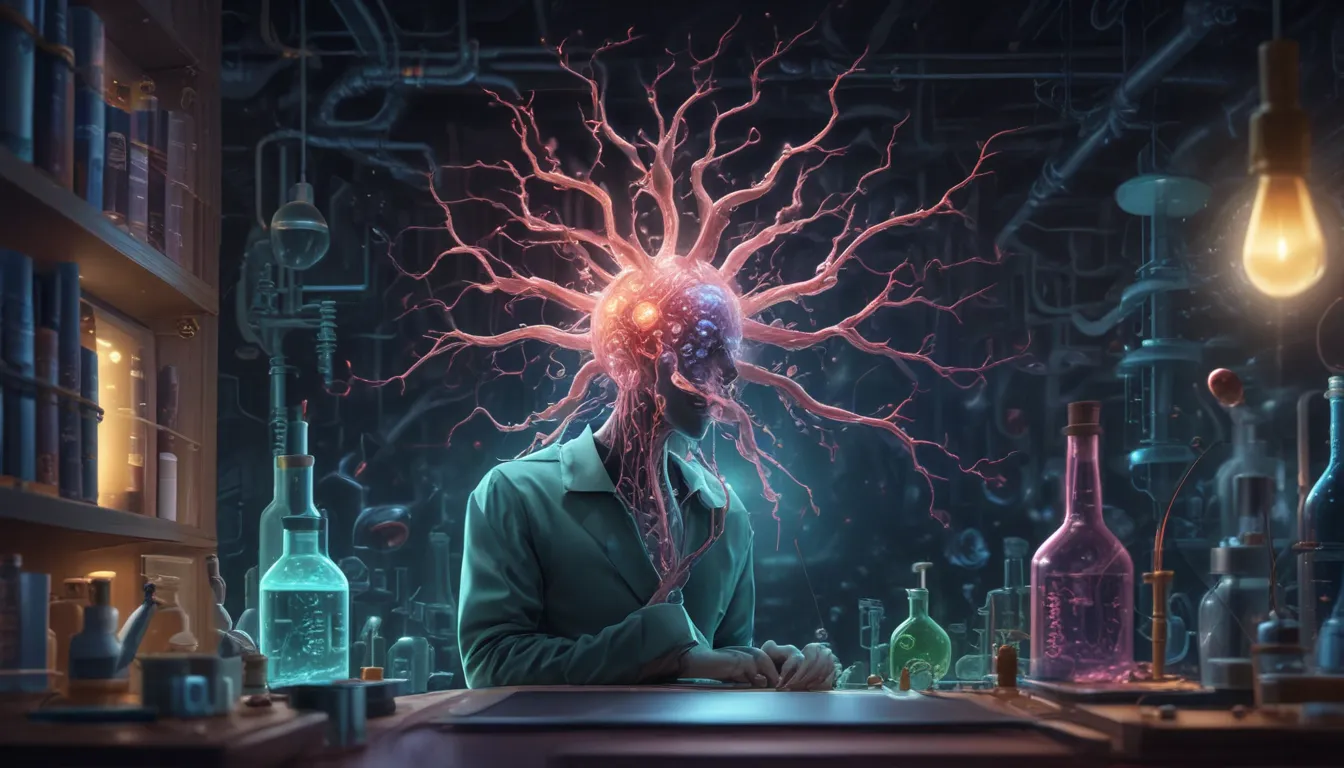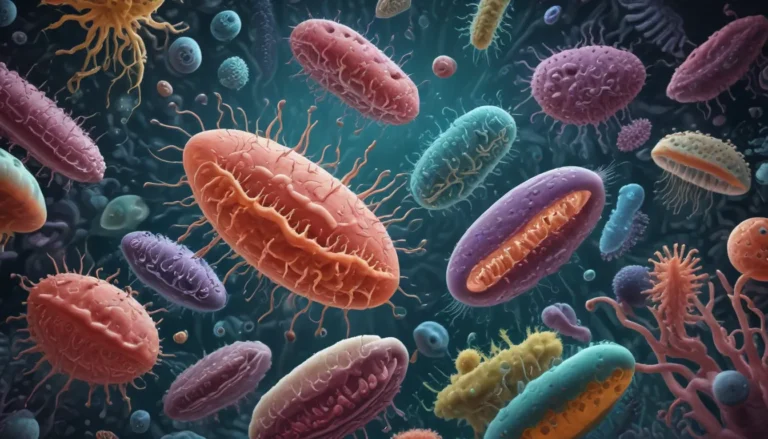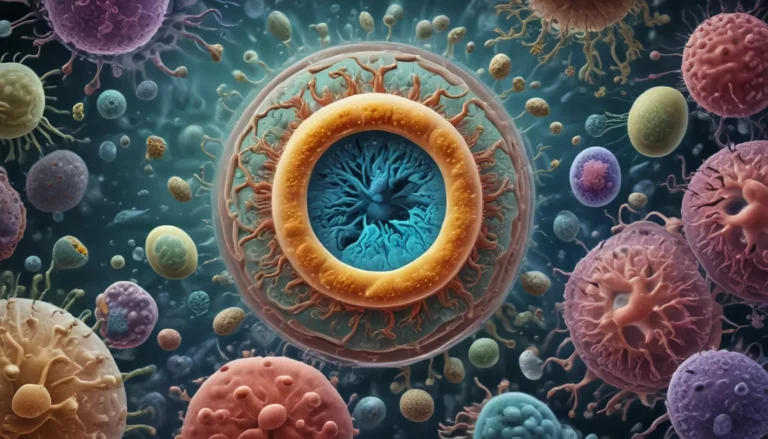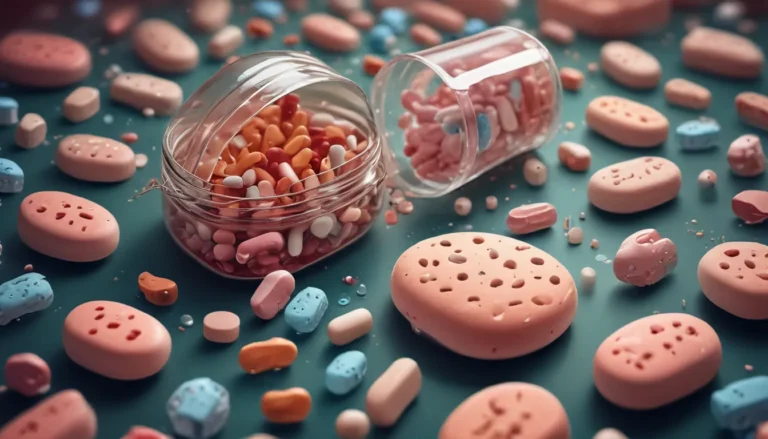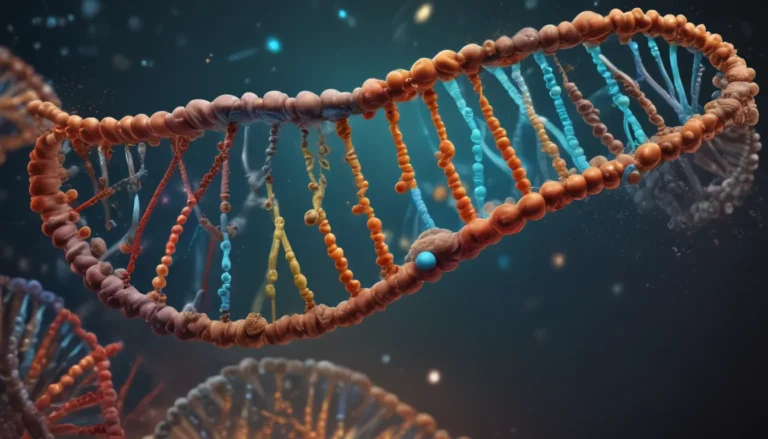A Note About Images: The images used in our articles are for illustration purposes only and may not exactly match the content. They are meant to engage readers, but the text should be relied upon for accurate information.
Nanobiotechnology, a captivating blend of nanotechnology and biology, is reshaping the landscape of science and technology. By harnessing the power of nanoscale manipulation, this field is driving innovations in medicine, agriculture, energy, and environmental sustainability. Join us on a journey as we uncover 20 astonishing facts about nanobiotechnology that showcase its extraordinary capabilities and potential impact on our world.
Discovering the Fusion of Nanotechnology and Biology
Nanobiotechnology stands at the crossroads of nanotechnology and biology, merging the intricacies of tiny technology with the complexities of living systems. This interdisciplinary science involves the manipulation and control of biological matter at the nanoscale, offering a unique perspective on solving real-world challenges.
Revolutionizing Drug Delivery with Nanoparticles
One of the groundbreaking applications of nanobiotechnology lies in drug delivery. By utilizing nanoparticles, scientists can precisely target specific sites in the body, enhancing the efficacy of treatments while minimizing side effects. The use of nanorobots further enables targeted delivery to individual cells or tissues, paving the way for personalized medicine.
Pioneering Early Disease Detection with Nanosensors
Nanosensors play a vital role in early disease detection by identifying biomarkers associated with various health conditions. This innovative approach allows for timely intervention and improved treatment outcomes, underscoring the potential of nanobiotechnology in advancing healthcare.
Unraveling the Mysteries of Nanomaterials
At the nanoscale, materials exhibit extraordinary properties that defy conventional wisdom. Increased surface area, enhanced reactivity, and altered mechanical, electrical, and optical characteristics characterize nanomaterials, offering a myriad of possibilities for applications in diverse fields.
Propelling Cancer Treatment into the Future
Nanoparticles tailored to target cancer cells are revolutionizing oncology by delivering chemotherapy drugs directly to tumors. This targeted approach not only enhances treatment efficacy but also minimizes collateral damage to healthy tissues, marking a significant advancement in cancer therapy.
Embracing Nanotechnology in Agriculture
In the realm of agriculture, nanobiotechnology holds promise for boosting crop yield, optimizing nutrient uptake, and developing environmentally-friendly pesticides. Nanoparticles offer tailored solutions for enhancing agricultural practices and sustainability, ushering in a new era of innovation in farming.
Harnessing Nanodevices for Biological Monitoring
Nanobiosensors enable real-time monitoring and regulation of biological processes, offering insights into vital signs, drug concentrations, and physiological parameters. These miniature devices pave the way for precise healthcare interventions and personalized treatments, enhancing the quality of patient care.
Illuminating Medical Imaging with Nanoparticles
Nanobiotechnology has revolutionized medical imaging by introducing nanoparticles as contrast agents. These unique particles enhance visibility in imaging techniques like MRI and CT scans, providing unprecedented clarity for accurate diagnosis and treatment planning.
Empowering Solar Cells with Nanomaterials
The efficiency of solar cells is being enhanced through the integration of nanomaterials such as quantum dots. These innovative materials improve light absorption and electron transfer, boosting energy conversion rates and driving progress towards sustainable solar technologies.
Redefining DNA Sequencing Accuracy with Nanopores
Nanopore sequencing offers a cutting-edge approach to reading individual DNA molecules with unparalleled speed and accuracy. This breakthrough technology holds immense potential for advancing genomic research, personalized medicine, and disease diagnostics.
Unleashing the Potential of Nanoelectronics
Nanobiotechnology is reshaping the landscape of electronics by enabling the development of smaller, faster, and more efficient devices. Nanoelectronics leverage the unique properties of nanomaterials to drive innovation in computing, communications, and consumer electronics.
Championing Environmental Remediation with Nanoparticles
Nanoparticles are emerging as powerful tools for environmental cleanup, with applications in water and soil remediation. These versatile particles can efficiently remove pollutants and contaminants, offering sustainable solutions for environmental conservation and ecosystem preservation.
Elevating Gene Therapy Efficiency through Nanoparticles
The precision targeting offered by nanoparticles is revolutionizing gene therapy, enabling the delivery of genetic material to specific cells with unprecedented accuracy. This approach holds promise for treating genetic disorders and inherited diseases, ushering in a new era of personalized medicine.
Spearheading Drug Discovery Innovations with Nanotechnology
Nanobiotechnology is catalyzing advancements in drug discovery by facilitating the development and testing of novel compounds with enhanced efficiency. By leveraging nanoscale tools and techniques, researchers can accelerate the discovery of new therapies and treatments for a wide range of diseases.
Enhancing Food Preservation with Nanoparticles
Nanoparticles are transforming food preservation practices by creating antimicrobial films and coatings that extend the shelf life of perishable goods. These innovative solutions combat spoilage and contamination, promoting food safety and security in a rapidly evolving global food system.
Embracing Biosensing and Diagnostics in Healthcare
Nanobiosensors play a pivotal role in healthcare by enabling rapid and sensitive detection of biomarkers for disease diagnosis and monitoring. These cutting-edge devices provide valuable insights into health conditions, paving the way for early intervention and improved patient outcomes.
Empowering Regenerative Medicine with Nanobiotechnology
Nanobiotechnology offers transformative solutions in regenerative medicine by leveraging nanoscaffolds and materials to stimulate tissue regeneration and accelerate healing. These innovative approaches hold great promise for treating injuries, degenerative diseases, and complex medical conditions.
In conclusion, nanobiotechnology stands as a beacon of innovation and discovery, offering boundless opportunities for transformative advancements across various industries. From targeted drug delivery to sustainable agriculture, from personalized healthcare to environmental conservation, the impact of nanobiotechnology is profound and far-reaching. As we continue to unlock the mysteries of the nanoscale world, we are poised to witness a new era of progress and prosperity driven by the remarkable capabilities of nanobiotechnology.
FAQs: Navigating the World of Nanobiotechnology
-
What is nanobiotechnology?
Nanobiotechnology is an interdisciplinary field that integrates nanotechnology and biology to manipulate biological systems at the nanoscale, driving innovations in medicine, agriculture, energy, and more. -
How does nanobiotechnology impact medicine?
Nanobiotechnology revolutionizes medicine by enabling targeted drug delivery, enhancing medical imaging, advancing disease diagnostics, and driving progress in regenerative medicine through innovative biomaterials. -
What are the environmental applications of nanobiotechnology?
Nanobiotechnology plays a vital role in environmental conservation by developing nanomaterials for pollution remediation, water purification, and sustainable agriculture practices to mitigate environmental challenges. -
Is nanobiotechnology safe for use?
While nanobiotechnology offers immense potential, safety considerations are essential. Thorough research on nanoparticle toxicity and stringent regulations are necessary to ensure the safe and ethical use of nanobiotechnological advancements. -
Where can I learn more about nanobiotechnology?
Explore the diverse realms of nanobiotechnology through reputable sources, educational programs, and research institutions dedicated to advancing this cutting-edge field for a deeper understanding of its applications and implications.
Prepare to be captivated by the wonders of nanobiotechnology as it continues to push boundaries, inspire innovation, and shape the future of science and technology. Join us in this extraordinary journey as we unravel the limitless possibilities of the nanoscale world and embrace a future defined by the astonishing achievements of nanobiotechnology.
